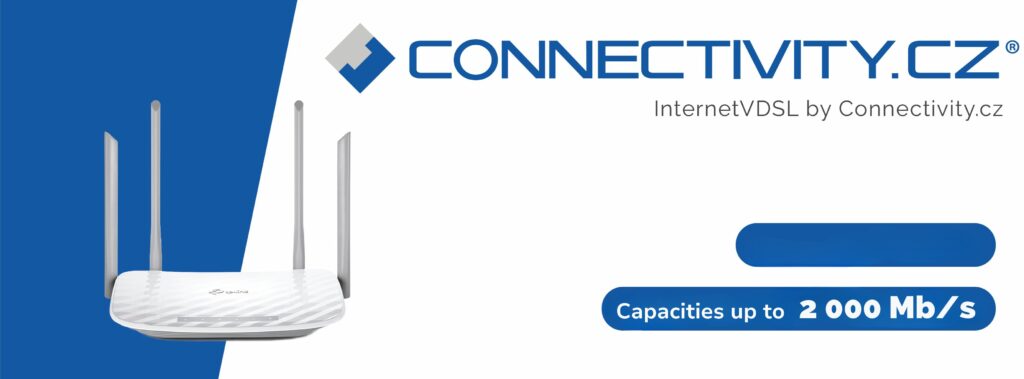The digital age has ushered in a revolution in internet connectivity, with Internet VDSL (Very-high-bitrate Digital Subscriber Line) standing at the forefront. This technology, a significant leap from traditional broadband, offers unparalleled speed and reliability. In this comprehensive guide, we explore the nuances, delving into the intricacies of routers and modems that power this high-speed internet service.
Table of Contents
Toggle1. Understanding VDSL: The Future of Internet Technology
The Evolution from Broadband to VDSL
The journey from traditional broadband to VDSL marks a significant milestone in internet technology. With the demand for higher bandwidth and faster internet speeds, VDSL emerges as a frontrunner, offering speeds several times faster than its predecessors.
Building on the progress of its predecessors, VDSL not only accelerates internet speeds but also enhances the overall online experience. This advancement is particularly critical in today’s digital landscape, where streaming high-definition content, engaging in online gaming, and managing large-scale downloads have become commonplace. The deployment of VDSL technology has been pivotal in meeting these modern demands, ensuring that both individuals and businesses can benefit from a more robust and efficient internet service. Its introduction represents not just a step but a leap forward, bridging the gap between traditional capabilities and the burgeoning needs of a connected world.
Technical Specifications of VDSL
VDSL operates over existing copper telephone lines, providing an efficient and cost-effective solution for high-speed internet. It supports both symmetric and asymmetric data transmission, catering to diverse user needs.
Utilizing the widespread infrastructure of copper telephone lines, VDSL minimizes the need for new installations, thus facilitating a quicker and less intrusive transition to high-speed internet. It adeptly handles both symmetric data transmission, where upload and download speeds are equivalent—ideal for video conferencing and online gaming—and asymmetric transmission, which prioritizes download speeds, perfect for streaming services and web browsing. This versatility allows users to select a plan that best fits their internet usage patterns, ensuring they are not paying for unnecessary bandwidth while still enjoying a superior, lag-free online experience.
Benefits of Upgrading to VDSL
Upgrading to VDSL not only means faster internet speeds but also improved reliability and lower latency. It’s particularly beneficial for activities requiring high bandwidth, such as streaming high-definition videos, online gaming, and large file transfers.
The transformative upgrade to VDSL is akin to switching from a country road to a high-speed highway, where information travels at unprecedented rates. This surge in data transfer efficiency is accompanied by a robust stability in connection, minimizing the disruptions that can plague online activities. With lower latency, every click, every command, and every stream feels instantaneous, allowing for real-time interaction and seamless digital experiences. Whether you’re participating in a competitive online gaming session, downloading hefty data packets for work, or enjoying the latest 4K movie, VDSL ensures that your digital life moves at the pace you demand, with the reliability you deserve.
2. Choosing the Right VDSL Router
Key Features of VDSL Routers
When selecting a router, key features to consider include signal strength, security protocols, and the number of supported connections. The router’s compatibility with VDSL technology is crucial for optimal performance.
In addition to these fundamental characteristics, modern VDSL routers come with a suite of advanced functionalities designed to meet the diverse needs of today’s digital households. For instance, dual-band or even tri-band routers offer separate frequencies for different types of activities, reducing interference and optimizing performance. Beamforming technology focuses the router’s signal towards specific devices rather than dispersing it broadly, enhancing connection stability and speed.
Parental controls and guest network options provide tailored access, ensuring safety and privacy. Furthermore, routers with smart-connect features can intelligently assign devices to the most appropriate band, balancing the load and maintaining peak network efficiency. Thus, delving into these nuanced features and understanding their practical applications can significantly impact your home’s VDSL network quality and user experience.
Setting Up Your Router for Optimal Performance
Proper setup and configuration of your router are essential for maximizing its performance. We provide step-by-step guidelines for installation and optimal settings adjustments.
Selecting the ideal VDSL router is a critical decision that can significantly influence your internet experience. The right router should not only be compatible with VDSL technology but also suit your specific usage patterns and space requirements. For instance, households with multiple devices or large areas may benefit from a router with strong signal strength and extensive coverage, potentially equipped with mesh networking capabilities for seamless connectivity across various rooms.
Advanced features such as Quality of Service (QoS) settings can prioritize traffic to ensure bandwidth-intensive tasks like video conferencing or online gaming remain uninterrupted. Moreover, with cybersecurity threats on the rise, choosing a router with robust security protocols is paramount to safeguard your digital life. Investing time to research and select a router with the right balance of speed, coverage, and security features is the cornerstone of a truly optimized and secure VDSL network.

Internet VDSL in Czech republic
Connectivity.cz is a reliable company providing Optical and VDSL Internet connection services across the entire territory of the Czech Republic, having been active in the market since 2010.
3. The Role of Modems in VDSL Connectivity
How VDSL Modems Work in a Setup
The modem acts as the bridge between your local network and the internet, converting digital signals into a format suitable for transmission over telephone lines.
In a VDSL setup, the modem’s role extends beyond mere signal conversion; it orchestrates a symphony of data transmission with remarkable efficiency. By employing advanced modulation techniques, VDSL modems can transmit data at a much higher frequency range than standard modems. This results in significantly faster data rates, allowing for the seamless streaming of ultra-high-definition content and swift, reliable communication across the web.
Furthermore, these modems are equipped with sophisticated error-correction protocols that ensure data integrity, even over the inherent imperfections of copper lines. The outcome is a robust and agile internet service that meets the demands of the most bandwidth-intensive tasks without faltering.
Modem Types and Their Features
There are various types of VDSL modems, each with unique features and capabilities. We delve into the specifics of these modems, helping you understand which type best suits your needs.
Installation and Maintenance of Modems
Proper installation and regular maintenance of your VDSL modem are essential for ensuring consistent and reliable internet connectivity. We provide tips and best practices for modem care.
For optimal performance of your VDSL modem, positioning is paramount; it should be placed in a central location, away from obstructions and electronic interferences. Regular checks for firmware updates are critical, as manufacturers often release enhancements that improve functionality and security. Dust accumulation can impede performance, so ensure the modem is kept clean and well-ventilated. In terms of maintenance, rebooting the modem periodically can clear cache and refresh connections, potentially solving latency issues before they become noticeable.
Vigilance in these practices not only prolongs the life of your modem but also secures a network that is both fast and dependable.

4. Maximizing Internet Speed with VDSL
Optimizing VDSL Router and Modem Settings
Fine-tuning your router and modem settings can significantly enhance your VDSL internet speed. We discuss various optimization techniques and settings adjustments for peak performance.
Achieving the pinnacle of VDSL performance entails a nuanced understanding of network settings and the willingness to experiment for the best results. Initiating with the modem, ensuring that it syncs to the maximum speed tier offered by your service provider can make a noticeable difference. Within the router’s interface, adjusting the MTU (Maximum Transmission Unit) size for optimal packet transfer, and selecting the least congested channel for Wi-Fi can mitigate interference and boost speeds.
For households with multiple users, configuring QoS settings to prioritize bandwidth for essential services like VoIP or streaming platforms can alleviate network congestion. Such meticulous adjustments to your VDSL router and modem not only amplify speed but also stabilize your connection, providing a smoother and more responsive online experience.
Troubleshooting Common Issues
Despite its advantages, VDSL can sometimes encounter issues. We address common problems and provide practical solutions to ensure uninterrupted service.
Enhancing Speeds with Advanced Techniques
Beyond basic settings adjustments, there are advanced techniques to further boost your VDSL speeds. We explore these methods, providing expert advice for tech-savvy users.
5. VDSL and Home Networking Solutions
Creating an Efficient Home Network
Leveraging VDSL for an efficient home network involves careful planning and setup. We discuss strategies for optimizing your home network layout and device placement for maximum efficiency.
Security Considerations for Networks
Security is paramount in any internet setup, especially with VDSL. We highlight important security measures and best practices to protect your network from threats.
Smart Home Applications Leveraging
With its high speed and reliability, VDSL is ideal for powering smart home applications. We explore various smart home technologies that benefit from VDSL connectivity.
Frequently Asked Questions FAQ
What are the primary differences between VDSL and traditional broadband?
Answer: VDSL (Very-high-bitrate Digital Subscriber Line) differs significantly from traditional broadband in several aspects. The most notable difference is speed; VDSL offers much higher download and upload speeds, often up to 70 Mbps and beyond, compared to the maximum of 24 Mbps typically provided by ADSL (Asymmetric Digital Subscriber Line), a common type of traditional broadband. VDSL achieves this by using higher frequency bands over copper phone lines. Additionally, VDSL has a shorter effective range but delivers more consistent and reliable high-speed internet, especially beneficial for bandwidth-intensive activities like streaming HD video or online gaming.
How can I ensure my VDSL router is secure from external threats?
Answer: To secure your VDSL router from external threats, start by changing the default username and password to something more secure. Use a strong, unique password and consider changing it periodically. Enable WPA3 encryption for your Wi-Fi network to protect your wireless communications. Regularly update your router’s firmware to patch any security vulnerabilities. Additionally, disable features like WPS (Wi-Fi Protected Setup) and UPnP (Universal Plug and Play) unless necessary, as these can sometimes be exploited by attackers. Finally, consider using a firewall and regularly monitoring your network for any unusual activity.
What are the best practices for maintaining a VDSL modem?
Answer: To maintain your VDSL modem effectively, ensure it’s placed in a well-ventilated area to prevent overheating. Regularly dust off the modem and check for any physical damages. Keep the modem’s firmware updated to the latest version to ensure optimal performance and security. If you experience connectivity issues, a simple reboot can often resolve minor glitches. Avoid unplugging or moving the modem frequently to prevent wear and tear on the connectors. If you’re not using the modem for an extended period, consider unplugging it to save energy and reduce wear.
How can I troubleshoot slow internet speeds on my VDSL connection?
Answer: To troubleshoot slow internet speeds on your VDSL connection, start by rebooting your modem and router. Check for any physical damage to the cables and ensure they are securely connected. Test your speed using different devices to rule out device-specific issues. If using Wi-Fi, try moving closer to the router to see if the signal strength is a factor. Check for any interference from other wireless devices or networks. If the issue persists, contact your ISP to check if there are any service outages or line issues affecting your connection. They can also verify if your line is capable of supporting higher speeds.
Are there specific VDSL routers that are recommended for large homes?
Answer: For large homes, it’s important to choose VDSL routers with strong signal strength and wide coverage. Routers with multiple external antennas, beamforming technology, and dual-band or tri-band capabilities are ideal. Models with mesh networking capabilities can also be considered, as they allow you to expand your network coverage seamlessly. Look for routers from reputable brands known for reliability and performance. Additionally, consider routers with advanced features like QoS (Quality of Service) settings, which help prioritize bandwidth for different activities.
How does VDSL technology benefit smart home applications?
Answer: VDSL technology significantly benefits smart home applications due to its high-speed and reliable internet connectivity. This is crucial for smart devices that require constant and immediate data transfer, like smart security cameras, smart thermostats, and home automation systems. The low latency and high bandwidth of VDSL ensure that commands and information are transmitted quickly, enhancing the responsiveness and efficiency of smart home devices. Additionally, VDSL’s robust connection supports the simultaneous use of multiple smart devices without compromising performance, essential in a comprehensive smart home setup.

Conclusion: Embracing the Future with Internet VDSL
VDSL technology represents a significant leap forward in internet connectivity, offering speed, reliability, and efficiency far superior to traditional broadband. By understanding and leveraging the power of VDSL, along with the right routers and modems, users can enjoy an unparalleled online experience, whether for work, entertainment, or smart home applications.
Discussion
As we conclude this exploration of the dynamic world of Marketing, we invite you to share your experiences, insights, and tips in the comments below.
- Have you encountered specific challenges or discovered effective strategies in your journey with digital marketing? We encourage you to contribute to our community by sharing your valuable expertise. If you have questions or seek advice on any aspect related to Marketing, feel free to ask.
Let’s foster a collaborative space where knowledge is shared, questions are answered, and the community thrives. Your input can be instrumental in helping others navigate the nuances of Digital marketing and unlock new levels of success in the realm of online marketing.
Sources: InternetVDSL.cz, HowtoPerfect Internet, VDSL on Wikipedia, Gartner – Very High-speed Digital Subscriber Lines, VDSL Technology Issues—An Overview, Very High Speed Digital Subscriber Line, Find Fast and Reliable Internet Connection Near You in Prague, Find Fast and Reliable Internet Connection Near You in Prague, Internet Connection Near Me in Prague, Kolman IT: SEO Optimization and Digital Marketing Prague, Digitální marketing Praha: Nechte web prodávat za vás, SEO Praha: Optimalizace webových stránek pro váš online úspěch, Optimalizace SEO a Digitální Marketing na míru Praha, Internet Speed Test








